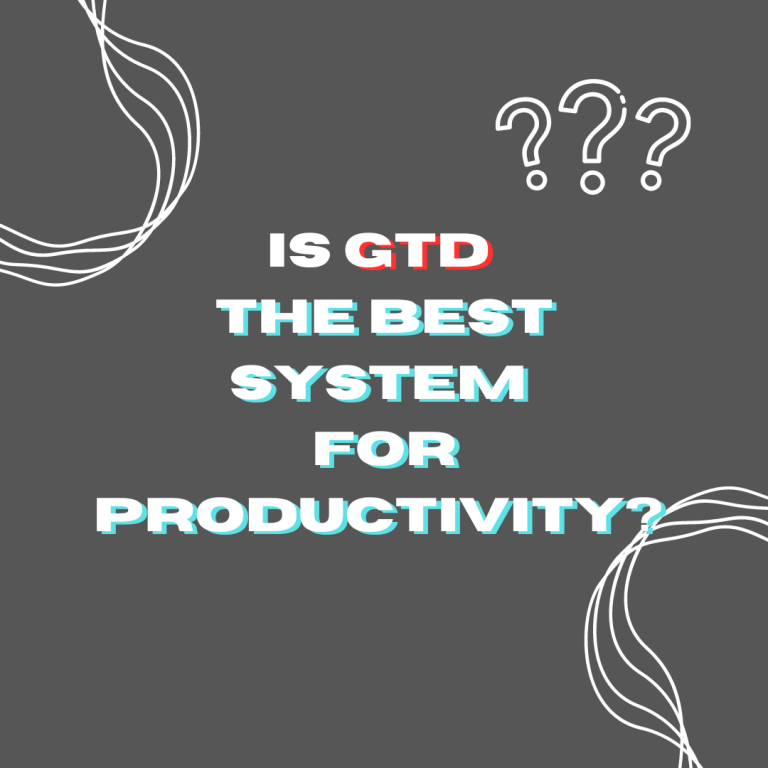Is GTD the best system for productivity? Let’s look at it from the other perspective, and let’s understand what Gettings Things Done is and how it can really help us.
The Philosophy of GTD
GTD is not a magical solution to productivity; instead, it is a systematic approach that mirrors how our real world operates. It’s rooted in the understanding that humans have responsibilities, but no built-in calendars in their brains. Thus, GTD encourages us to track and clarify our responsibilities, helping us remember what to do, when to do it, and why it’s important.
GTD is the engine that makes the productivity car run. It’s the methodology that enables us to fulfill our obligations, not only to keep our work on track but to enjoy our leisure time guilt-free. It’s the foundation of any productivity journey, freeing us from living in denial and helping us get our act together. However, GTD isn’t a one-stop shop; it doesn’t provide a life purpose or the secrets to a healthy body. It gives you the foundation to pursue these aspects, but it doesn’t dictate what to do in these areas.
The Specificity of Success
One principle often associated with productivity is “success is specific.” Sure, GTD can help you achieve tasks, but you still have to pick the right tasks. Working for minimum wage is not going to make you a millionaire, and exclusively using a treadmill might not make you a bodybuilder. GTD is the engine that drives success in fulfilling commitments by capturing and clarifying everything and reminding you when you need to do it. However, it’s up to you to decide what to do.
The Power of Choice
GTD is like a wind-up motor you can drop in a toy car. Each toy car represents something you’re working on, such as learning guitar, doing school assignments, or losing weight. If you don’t own a guitar and never practice, you won’t excel at playing it. If you don’t attend classes and do homework, you won’t pass the course. GTD can help you get things done, but it’s you who decides what you want to accomplish.
The Role of Personalization
David Allen encourages personalization and creativity in his GTD approach. While the core methodology remains the same—capture, process, remind—the implementation is up to you. Do you prefer an analog or digital system? What are your personal, family, charitable, job-related, and hobby-related goals?
As you master GTD and set up “plug-ins” for all the foundational aspects of your life, you start looking professional from the outside, running your life the way you want. At this stage, it’s not necessarily about having achieved all your goals—like becoming a millionaire or having a six-pack—but about having the core life management nailed down, enabling you to focus on what you truly want to do.
Is GTD the Best System for Productivity?
Yes, GTD can be the best productivity system for those juggling numerous tasks across different life zones, as it provides an effective method to capture, clarify, and organize responsibilities. By bringing all these elements under control, it ensures that nothing falls through the cracks, ultimately aiding in stress-free productivity.
Compared to other systems, GTD is complete. The alternatives to GTD always have something missing. They don’t cover so many aspects of the work. And so many areas in which we need to be involved.
The GTD method shines when implemented by individuals with diverse responsibilities and life zones. These life zones could range from personal growth, family obligations, work-related tasks, religious commitments, to hobbies and more. GTD isn’t simply a to-do list system; it’s a comprehensive workflow that helps users manage the “mental load” of their many tasks and responsibilities.
GTD is an answer to those seeking control over their tasks across numerous life zones. Here’s why:
Capturing All Tasks
GTD starts by advocating for a “capture” phase, where you gather everything that has your attention. No task or responsibility is too small or large, and this process is vital for those with myriad tasks on their plates. It can be a lifesaver for people juggling responsibilities across various life zones, from personal to professional.
Clarifying and Organizing
After capturing, the GTD method encourages you to clarify what each item means and what action it requires. Then, these tasks are organized in a system outside your head, creating a roadmap to navigate your responsibilities. For people managing multiple life zones, this process can prove invaluable, reducing the chance of overlooked tasks and providing a clear vision of what lies ahead.
Regular Reviewing
GTD isn’t a set-it-and-forget-it system. Regular reviewing keeps your system up-to-date and ensures that you’re always aware of your upcoming tasks and responsibilities. This proves especially beneficial when handling various life zones, as it ensures none of them get neglected over time.
GTD is the Best System for Productivity. It’s more than a productivity system; it’s a holistic approach to managing life’s complexities, ensuring that you can focus on what matters most at any given time. To get the most out of GTD you’re going to need the best tools, try these.




